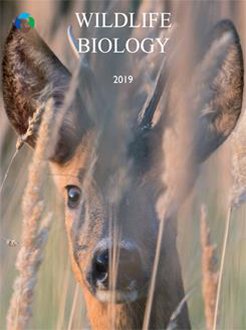Individuals in substandard physical condition are predicted to be more vulnerable to predation. Support for this prediction is inconsistent partly as a result of differences across systems in the life histories of predator and prey species. Our objective was to examine the physical condition of woodland caribou Rangifer tarandus caribou calves depredated by two predators with different life histories in Newfoundland, Canada. Black bears Ursus americanus are capable of chasing calves at high speeds over short distances and primarily prey on calves <1 month of age. Coyotes Canis latrans are cursorial predators that pursue prey over longer distances, which is expected to result in the selection of substandard individuals. We hypothesized that 1) black bears will kill calves in substandard physical condition, while 2) coyotes will kill calves from across the distribution of individual conditions. We used mitochondrial DNA species identification tests to assign predator species to calf mortalities. We then used molecular identifications and field observations to build a predictive model using generalized boosted trees to predict the predator species where a molecular identification was unavailable. We tested our hypotheses using Cox proportional hazards models under a competing risks framework. Bears killed younger calves and lighter calves, while coyotes killed heavier calves. Coyotes also killed more late-born calves, which might suggest prey switching as calves become more abundant later in the season. Our findings suggest that the physical constraints of predators play a greater role than predator hunting strategies in this system, but other processes are likely influential. The tendency for coyotes to kill heavier calves might result from sustained coyote predation over time, following the removal by black bears of lighter calves during their first month of age. This research illuminates the complexity of predator–prey interactions in Newfoundland and highlights an important source of variability for predator–prey systems.
How to translate text using browser tools
16 May 2019
Intrinsic traits of woodland caribou Rangifer tarandus caribou calves depredated by black bears Ursus americanus and coyotes Canis latrans
Matthew A. Mumma,
Guillaume Bastille-Rousseau,
Steve E. Gullage,
Colleen E. Soulliere,
Shane P. Mahoney,
Lisette P. Waits

Wildlife Biology
Vol. 2019 • No. 1
2019
Vol. 2019 • No. 1
2019
Cox proportional hazards
generalized boosted trees
genetic techniques
Newfoundland
physical condition
predator hunting strategy
vulnerability





